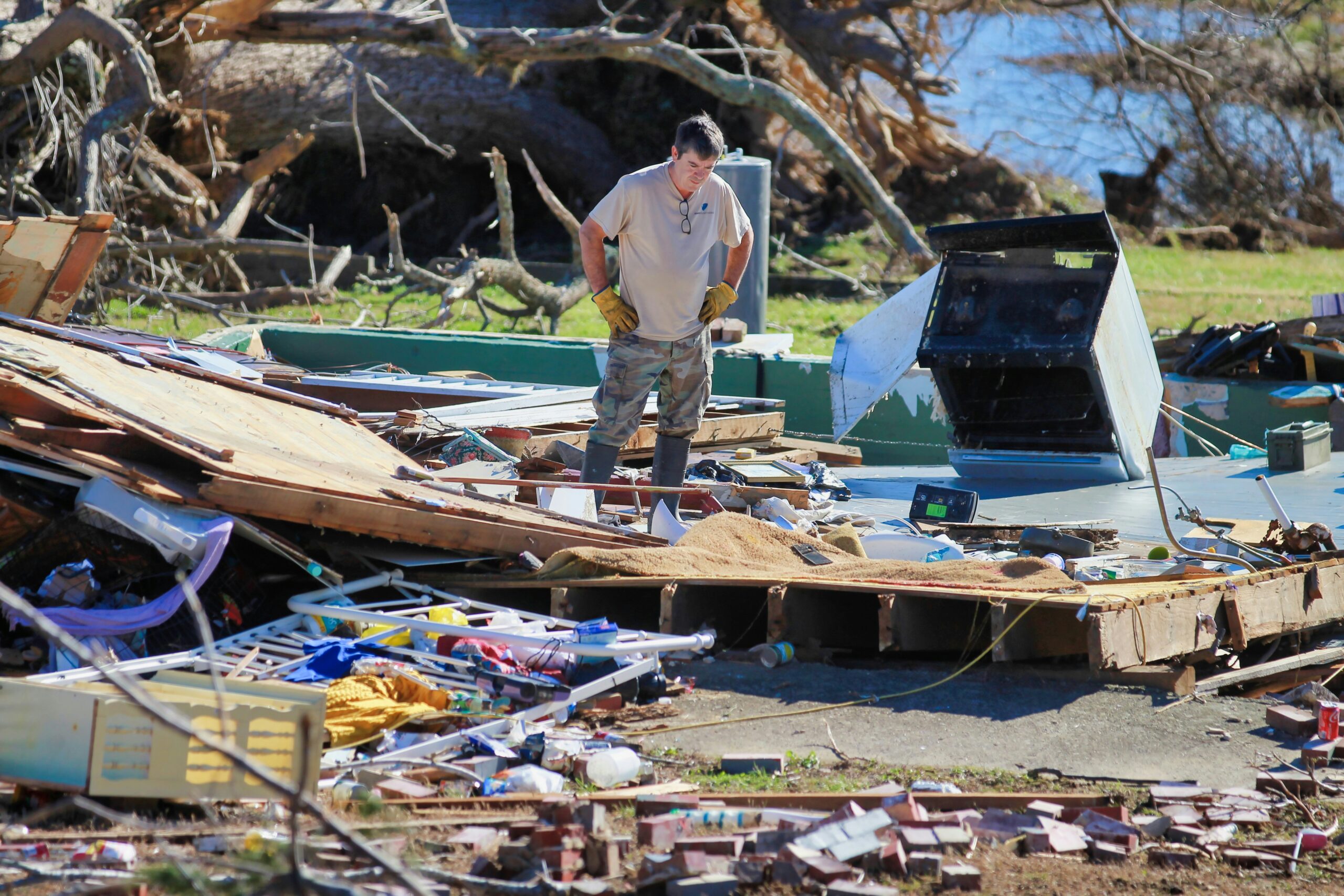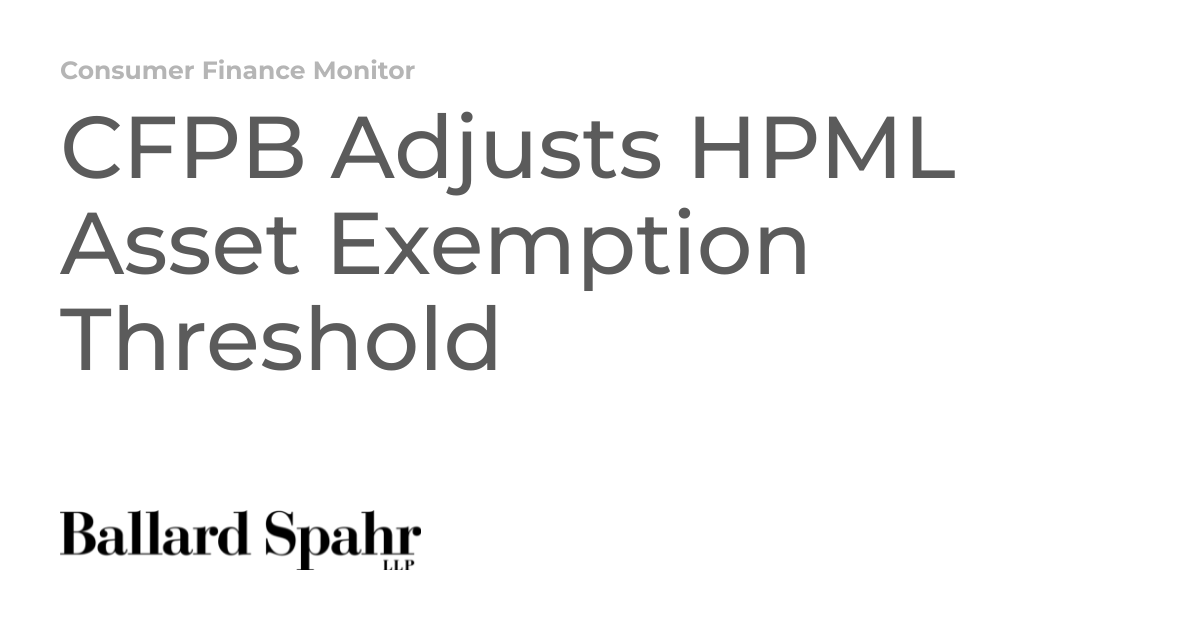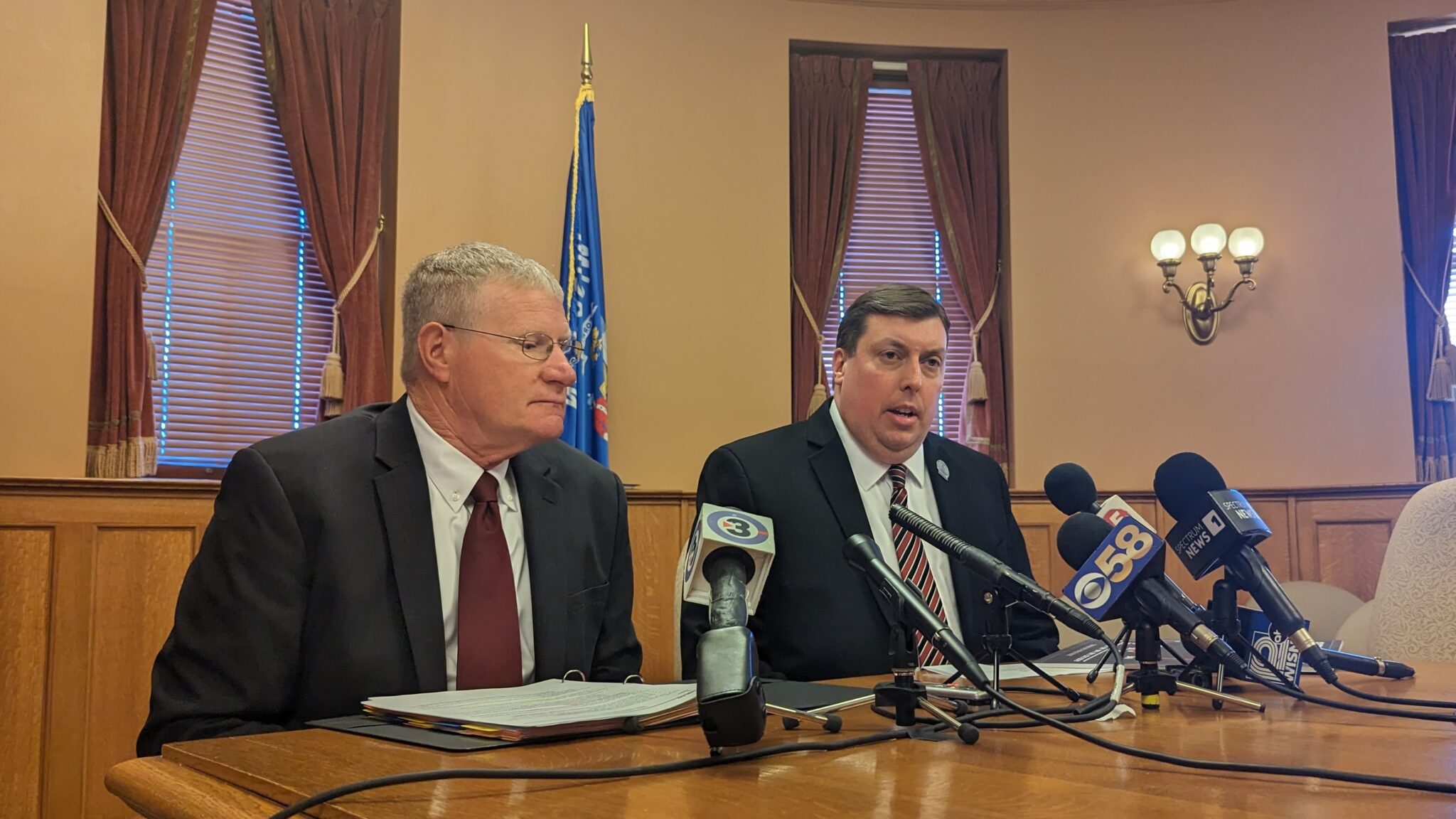- Industry majors, authorities gather at Turkuvaz to discuss ‘future of finance’
- The Secret to Making Successful Financial New Year’s Resolutions
- Powerless Against Financial Scams, The CFPB Scapegoats The Big Banks
- Gateley (Holdings) Plc’s (LON:GTLY) Stock Has Shown Weakness Lately But Financial Prospects Look Decent: Is The Market Wrong?
- CFPB picks FDX to set open banking standards
The incoming administration should establish a $500 million pull-financing facility to ensure infrastructure and asset resiliency with partner nations by catalyzing the private sector to develop cutting-edge technologies. The increasing frequency of extreme weather events, which caused over $200 billion in global economic losses in 2023, is disrupting global supply chains and exacerbating migration pressures, particularly for the U.S. Investing in climate resilience abroad offers a significant opportunity for U.S. businesses in technology, engineering, and infrastructure, while also supporting job creation at home.
You are viewing: Pull Finance for Market-driven Infrastructure and Asset Resilience
Pull-finance mechanisms can maximize the efficiency and impact of U.S. investments, fostering innovation and driving sustainable solutions to address global vulnerabilities. Unlike traditional funding which second-guesses the markets by supporting only selected innovators, pull financing drives results by relying on the market to efficiently allocate resources to achievement, fostering competition and rewarding the most impactful solutions. Managed and steered by the U.S. government, the pull-financing facility would fund infrastructure and asset resiliency results delivered by the world’s cutting-edge innovators, mitigating the effects of extreme weather events and ultimately supporting U.S. interests abroad.
Challenge and Opportunity
The increasing frequency and severity of extreme weather events pose significant risks to global economic stability, with direct implications for U.S. interests. In 2023 alone, natural disasters caused over $200 billion in global economic losses with much of the damage concentrated in regions critical to global supply chains. U.S. businesses that depend on these supply chains face rising costs and disruptions, which translate into higher costs for U.S. businesses and consumers, undermining economic competitiveness.
Beyond the economic dimension, these vulnerabilities exacerbate socio-political pressures. Climate-induced displacement is accelerating, with 32.6 million people internally displaced by disasters in 2022. Most displaced individuals that cross borders migrate to countries neighboring their own, which are ill-equipped to handle the influx, often further destabilizing fragile states. For the U.S., this translates into increased migration pressures at its southern border, where natural disasters are already a driving force behind migration from Central America. Addressing these root causes through proactive resiliency investments abroad would reduce long-term strain on the U.S. and bolster stability in strategically important regions.
In addition to economic and social risks, resilience is now a key front in global competition. The People’s Republic of China has rapidly expanded its influence in developing nations through initiatives like the Belt and Road, financing over $200 billion in energy and infrastructure projects since 2013. A significant portion of these projects focus on resiliency investments, enabling China to position itself as a partner of choice for nations with asset and infrastructure exposure. This growing influence comes at the expense of U.S. global leadership.
In the context of these challenges, it is especially concerning that much of the U.S.’s existing spending may not be achieving the results it could. A recent audit of USAID climate initiatives highlights concerns around limited transparency and effectiveness in its development funding. The inefficient use of this funding is leaving opportunities on the table for U.S. businesses and workers. Global investments in adaptation and resiliency are projected to reach $500 billion annually by 2050. Resilience projects abroad could open substantial markets for American engineering, technology, and infrastructure firms. For instance, U.S.-based companies specializing in resilient agriculture, flood defense systems, advanced irrigation technologies, and energy infrastructure stand to benefit from increased demand. Domestically, the manufacturing and export of these solutions could generate significant economic activity, supporting high-quality jobs and revitalizing industrial sectors.
Pull finance presents an opportunity to increase the cost effectiveness of resiliency funding—and ensure this funding achieves U.S. interests. Pull finance mechanisms like results-based financing and Advance Market Commitments (AMC) reward successful solutions that meet specific criteria, promoting private sector engagement and market-driven problem-solving. Unlike traditional “push” financing, which funds chosen teams or projects directly, pull financing sets a goal and allows any innovator who reaches it to claim the reward, fostering competitive problem-solving without pre-selected winners. This approach includes various mechanisms – such as prize challenges, milestone payments, advance market commitments, and subscription models – each suited to different issues and industries.
Pull financing is particularly effective for addressing complex challenges with unclear or emerging solutions, or in areas with limited commercial incentives. It has proven successful in various contexts, such as the first Trump Administration’s rapid development of COVID-19 vaccines through Operation Warp Speed and GAVI’s introduction of the pneumococcal vaccine in low-income countries. These initiatives highlight how pull financing can stimulate breakthrough innovations that efficiently address immediate needs in collaboration with private actors through effective incentives.
Pull finance can be used to efficiently advance infrastructure and asset resilience goals while also providing opportunities for U.S. innovators and industry. By stimulating demand for critically needed technologies for development like resilient seeds and energy storage solutions, as detailed in Box 1, well-designed pull finance would help link U.S. technology innovators to addressing needs of U.S. partners. As such, pull finance can play a critical role in positioning the U.S. as a partner of first choice for countries seeking to access U.S. innovation to meet resilience needs.
What would the design of a pull financing mechanism look like in practice?
Resilient Seeds
Agriculture in Africa is highly susceptible to extreme weather events, with limited adoption of effective farming technologies. Developing new seed varieties capable of withstanding these events and optimizing resource use has the potential to yield significant societal benefits.
While push financing can support the development of resource-efficient and productive seeds, it often lacks the ability to ensure they meet essential quality standards, like flavor and appearance, and are user-friendly across farming, transport and marketing stages. In contrast, pull financing can effectively incentivize private sector innovation across all critical dimensions, including end-user take-up.
A pull mechanism for resilient seeds, using a milestone payment mechanism, could cover a portion of R&D costs initially, with additional payments tied to successful lab trials. Depending on the obstacles to scaling – whether they arise from the innovator/distributor side or the farmer side – a small per-user payment to the innovator or per-user subsidy could help sustain market demand.
The design and scale of a pull financing mechanism to promote the rollout of new seeds and crop varieties will largely depend on the market readiness of the various seed types involved. Establishing effective pull mechanisms for seed development is estimated to cost between $50 million and $100 million, aiming for significant outreach to farmers. Along with supporting improved livelihoods for farmers, this small investment would open opportunities for U.S. technology innovators and companies.
See more : Bitcoin’s Price Patterns Mirror 2016 Growth Amid Macro Trends (10/01/2025)
Pull Finance Initiative for Infrastructure and Asset Resiliency in the Caribbean
The Caribbean is one of the regions most vulnerable to extreme weather events, making it critical to engage the private sector in developing and adopting technologies suited to Small Island Developing States (SIDS). Challenges such as limited demand and high costs hinder innovation and investment in these small markets, leaving key areas like agriculture and access underserved. Overcoming these market failures requires innovative approaches to create sustainable incentives for private sector involvement.
Pull finances offers a promising solution to drive resiliency in SIDS. By tying payments to measurable outcomes, this approach will incentivize the development and deployment of technologies that might otherwise remain inaccessible.
For example, pull finance could be used to stimulate the creation of energy storage solutions designed to withstand extreme weather conditions in remote areas. This could be help address the critical needs of SIDS’ such as Guyana which face energy security challenges linked to extreme weather conditions, especially in remote and dispersed areas. Energy storage technologies exist, but companies are not motivated to invest in tailored innovation for local needs because end-users cannot pay prices that compensate for innovation efforts. Pull finance could address this by committing to purchase an amount large enough that nudges companies to develop a tailored product, without raising market prices. Success would require partnerships with local SMEs, caps in installation costs, and specifications on storage capacity, along with relevant technology partners such as those in the U.S.. This approach would support immediate adaptation needs and lay the foundation for sustainable, market-driven solutions that ensure long-term resilience for SIDS.
Plan of Action
The new administration should establish a dedicated pull-financing facility to accelerate the scale-up and deployment of development solutions with partner nations. In line with other major U.S. climate initiatives, this facility could be managed by USAID’s Bureau for Resilience, Environment and Food Security (REFS), with significant support from USAID’s Innovation, Technology, and Research (ITR) Hub, in partnership with the U.S. Department of State. By leveraging USAID’s deep expertise in development and SPEC’s strategic diplomacy, this collaboration would ensure the facility addresses LMIC-specific needs while aligning with broader U.S. objectives.
The recent audit of USAID climate initiatives referenced above highlights concerns on the limited transparency and effectiveness in its climate funding. Thus, we recommend that USAID assesses the impact of its climate spending under the 2020-2024 administration and reallocates a portion of funds from less effective or stalled initiatives to this new facility. We recognize that it may be challenging to quickly identify $500 million in underperforming projects to close and reassign. Therefore, in addition to reallocating existing resources, we strongly recommend appealing to new funding for this initiative. This approach will ensure the new facility has the financial backing it needs to drive meaningful outcomes. Additional resources could also be sourced from large multilateral organizations such as the World Bank.
To enhance the facility’s impact, we recommend the active participation of agencies such as the National Oceanic and Atmospheric Administration (NOOA), particularly through the Climate and Societal Interactions Division (CSI) in the Steering Committee,
We propose that this facility draw on the example of the UK’s planned Climate Innovation Pull Facility (CIPF), a £185 million fund which aims to fund development-relevant pull finance projects in LMICs such as those proposed by the Center for Global Development and Instiglio. This can be achieved through the following steps:
Recommendation 1. Establish the pull-finance facility, governance and administration with an initial tranche of $500 million.
The initiative proposes establishing a pull-finance facility with an initial fund of $500 million. This facility will be overseen by a steering board chaired by USAID and comprising senior representatives from USAID, the State Department, NOOA , which will set the strategic direction and make final project selections.
A facility management team, led by USAID, will be responsible for ensuring the successful implementation of the facility, including the selection and delivery of 8 to 16 projects. The final number of projects will depend on the launch readiness of prioritized technologies and their potential impact, with the selection process guided by criteria that align with the facility’s strategic goals. The facility management team will also be responsible for contracting with project and evaluation partners, compliance with regulations, risk management, monitoring and evaluation, as well as payouts. Additionally, the facility management team will provide incubation support for selected initiatives, including technical consultations, financial modeling, contracting expertise, and feasibility assessments.
Designing pull financing mechanisms is complex and requires input from specialized experts, including scientists, economists, and legal advisors, to identify suitable market gaps and targets. An independent Technical Advisory Group (TAG) led by USAID and comprised of such experts should be established to provide technical guidance and quality assurance. The TAG will identify priority resilience topics, such as reducing crop-residue burning or developing resilient crops. It will also focus on sectors where the U.S. can enhance its global competitiveness, which faces high upfront costs and risks. Additionally, the TAG will be responsible for technical review and recommendations of the shortlisted project proposals to inform final selection, as well as provide general advice and challenge to the facility management team and steering board.
We suggest starting with $500 million as the minimum required to be credible and relevant as well as responsive to the scale of global need. Further, experience shows that pull mechanisms need to be of sufficient scale to sustainably shift markets. For instance, GAVI’s pneumococcal vaccine AMC entailed a $1.5 billion commitment and Frontier’s carbon capture AMC likewise entails over $1 billion in commitments.
Recommendation 2. Set up a performance management system to measure, assess and ensure impact.
The U.S. pull financing facility will implement a robust monitoring, evaluation, and learning (MEL) framework to track and enhance its impact and drive ongoing improvement through feedback and learning.
The facility manager will develop a logical framework (logframe) that includes key performance indicators (KPIs) and a progress and risk dashboard to track monthly performance. These tools will enable effective monitoring of progress, assessment of impact, and proactive risk management, allowing for quick responses to unexpected challenges or underperformance.
Monthly check-ins with an independent evaluation partner, along with oversight from a dedicated MEL committee, will ensure consistent and rigorous evaluation as well as continuous learning. Additionally, knowledge management and dissemination activities will facilitate the sharing of insights and best practices across the program.
Recommendation 3. Establish a knowledge management hub to facilitate the sharing of results and insights and ensure coordination across pull-financing projects.
See more : California college administrator picked to manage ISU finances
The hub will work closely with community partners and stakeholders – such as industry and tech leaders and manufacturers – in areas like resiliency-focused finance and innovation to build strong support and develop resources on essential topics, including the effectiveness of pull financing and optimal design strategies. Additionally, the hub will promote collaboration across projects focused on similar technological and production advancements, generating synergies that enhance their collective impact and benefits.
Once the proof of concept is established through clear evidence and learning, the facility will likely secure further stakeholder buy-in and attract additional funding for a scale up phase covering a larger portfolio of projects.
Conclusion
The federal government should establish a $500 million pull-financing facility to accelerate technologies for resilience in the face of growing development challenges. This initiative will unlock high-return investments and increase cost effectiveness of resiliency spending, driving economic and geopolitical goals. Managed and steered by USAID and the State Department, with support from NOOA, the facility would foster breakthroughs in critical areas like resilient infrastructure, energy, and technology, benefiting both U.S. businesses and our international partners. By investing strategically, the U.S. can ensure both national and global stability.
This action-ready policy memo is part of Day One 2025 — our effort to bring forward bold policy ideas, grounded in science and evidence, that can tackle the country’s biggest challenges and bring us closer to the prosperous, equitable and safe future that we all hope for whoever takes office in 2025 and beyond.
What are some of the main constraints to pull financing and how can they be overcome?
Pull financing mechanisms, such as prize competitions, milestone payments, and Advanced Market Commitments (AMCs) often face regulatory and legal challenges due to their dependency on successful outcomes for funding disbursement (CGD, 2021; CGD, 2023). First, it can make cashflow management challenging as federal law requires that legally binding financial commitments be made if the necessary appropriated funds are available, resulting in upfront scoring of costs, even if the actual expenditures occur years later. The uncertainty surrounding innovation and payouts can also create risk aversion, as most funding accounts are not “no-year” accounts, meaning committed funds can expire if competition goals are unmet within the designated timeframe.
To mitigate these constraints, agencies can use budgetary workarounds like no-year appropriations, allowing them to reallocate de-obligated funds from canceled competitions to new initiatives. Other options include employing credit-type scoring to discount costs based on the likelihood of non-payment and making non-legally binding commitments backed by third parties, such as international institutions, to avoid these challenges altogether.
read more
What is the expected timeline for the establishment and cost breakdown for this fund?
The entire fund is expected to span a maximum of five () years. The initial 12 months will concentrate on identifying eight (8) to 16 projects through comprehensive due diligence and providing incubation support. In the subsequent four (4) years, the focus will shift to project delivery.
read more
How is this initiative different from existing U.S. initiatives such as USAID’s Climate Finance for Development Accelerator (CFDA)?
In contrast to the traditional push-funding approach of the CFDA program, our proposed pull-finance initiative introduces a unique market-shaping component aimed at driving key infrastructure and resilience solutions to fruition. In contrast to CFDA, pull finance addresses demand-side risks by providing demand-side guarantees of a future market for the technology or solution. It also mitigates R&D risk by combining incentives for research and development, ensuring that a viable market exists once the technology is developed. This approach helps accelerate market creation and innovation in high-risk, high-innovation sectors where demand or technological maturity is uncertain.
read more
Environment
day one project
Using Pull Finance for Market-driven Infrastructure and Asset Resilience
The increasing frequency of extreme weather events, which caused over $200 billion in global economic losses in 2023, is disrupting global supply chains and exacerbating migration pressures, particularly for the U.S. Investing in climate resilience abroad offers a significant opportunity for U.S. businesses in technology, engineering, and infrastructure, while also supporting job creation at home.
01.09.25
|
10 min read
Environment
day one project
Enhancing Local Capacity for Disaster Resilience
A new initiative targeting service investment to build resilience in low-capacity communities would help build capacity at the local level, train a new generation of service-oriented professionals, and ensure that federal funding gets to the communities that need it most.
01.07.25
|
8 min read
Four Guiding Principles for Accountability and Transparency in Wildfire Management
The federal government spends billions every year on wildfire suppression and recovery. Despite this, the size and intensity of fires continues to grow, increasing costs to human health, property, and the economy as a whole.
12.19.24
|
2 min read
Environment
day one project
Polar Infrastructure and Science for National Security: A Federal Agenda to Promote Glacier Resilience and Strengthen American Competitiveness
Congress and the incoming Trump Administration should work together to reinforce the U.S. position in the regions, recognizing the role Antarctica in particular may have in a changing global order and its significance for sea-level rise.
12.10.24
|
7 min read
Source link https://fas.org/publication/pull-finance-climate-resilience/
Source: https://summacumlaude.site
Category: News







